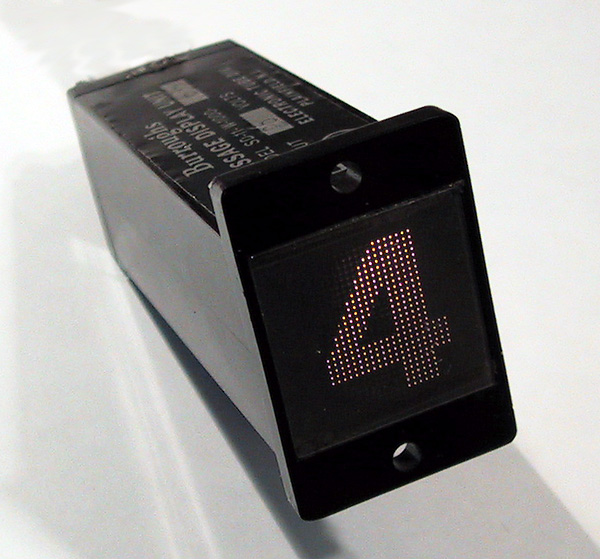
Burroughs SD-11-W-1000 sphericular optical display.
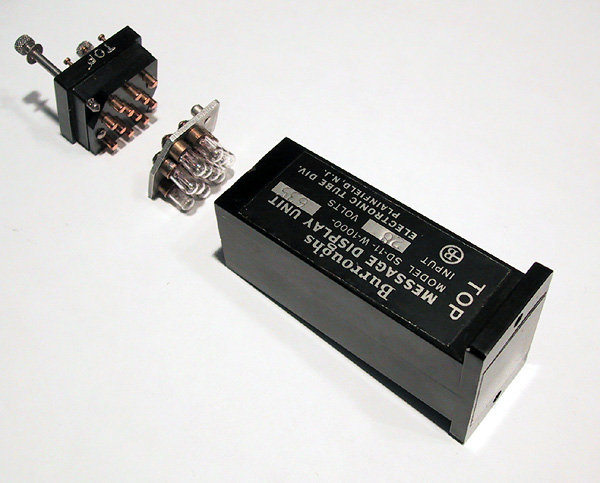
SD-11 incandescent display with back removed. The display body is a perplexing device that is mostly empty space and glued together, making further disassembly problematic.
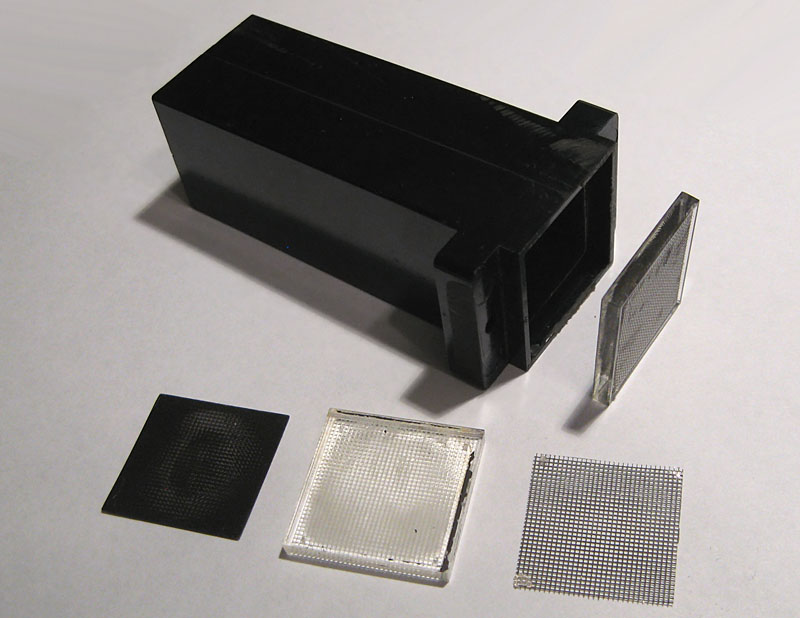
Cutting through the front of the display reveals that all of the action happens in a single wafer approximately 2mm thick. This wafer can be further separated into three structures that do all the work of bending light into the numerical shapes.
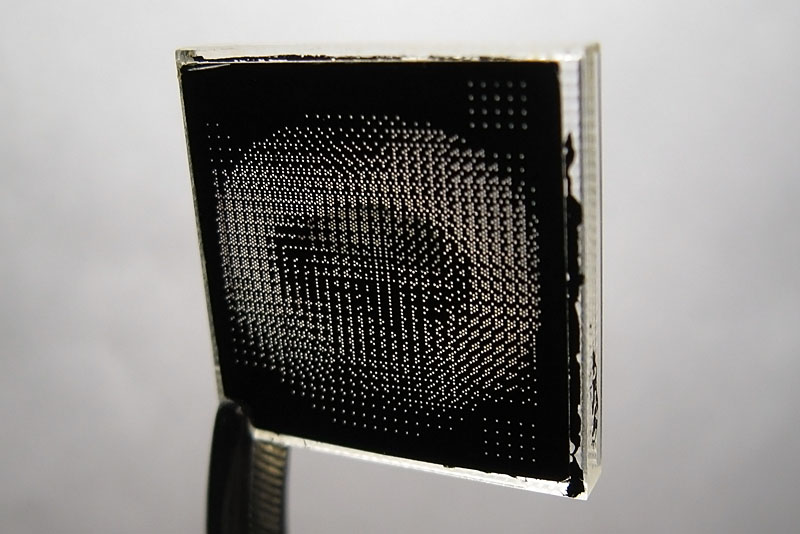
The front-most layer is a pixel mask that contains dots representing each digit superimposed on each other.
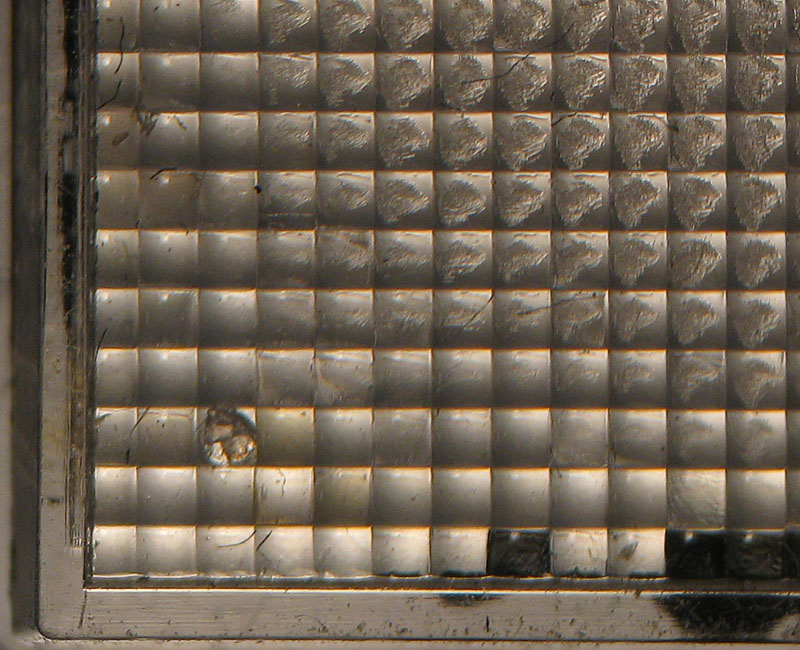
The middle layer is a lens made up of a 30x30 matrix of sub-lenses. Each sublens projects a miniature reproduction of the bulb pattern at the back of the device onto the pixel mask.
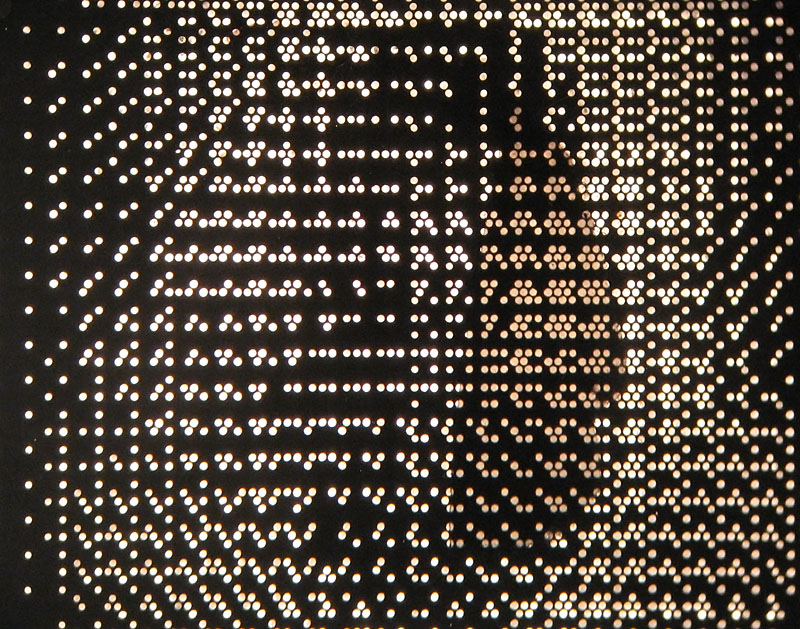
Here is the pixel mask at 20x magnification. Each pixel of the pixel mask contains a transparent reproduction of the projected bulb pattern from the back of the device. Pixels that are not used in a given digit are blacked out in the bulb pattern on the mask. In this manner the mask 'programs' which pixels are lit for each bulb.
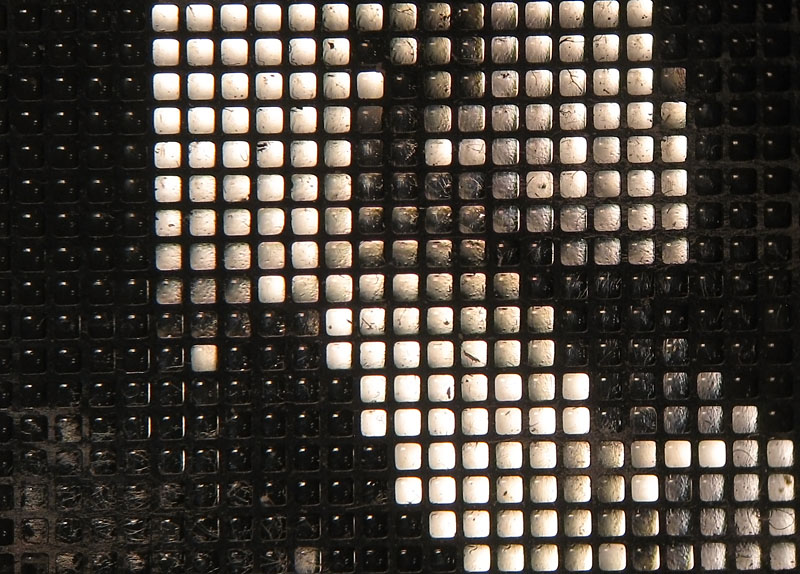
The back layer of the image stack is a metal shadow mask, which is fused to the lens layer with melted plastic. The shadow mask prevents light from bleeding between adjacent pixels for a crisp display.

This composite image shows the principle of operation in effect. Two digits are lit at the same time, with the second image showing what the bulb pattern in the back of the display looks like. The third image is a 20x close up of the pixel mask, showing the bulb pattern reduced in miniature and selectively blocked.
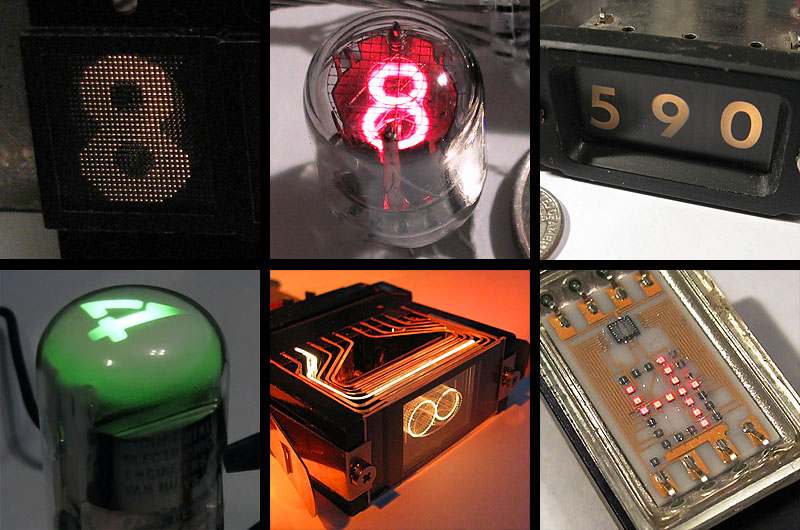
A comparison of sphericular digit reproduction with other period technology. From top left; Burroughs SD-11, Burroughs 4021 Nixie tube, IEE 340 projection display, IEE BA-0000-P31 Nimo tube, KGM Electronics IND-1803 edge lit display, Hewlett Packard 5082-7000 LED.
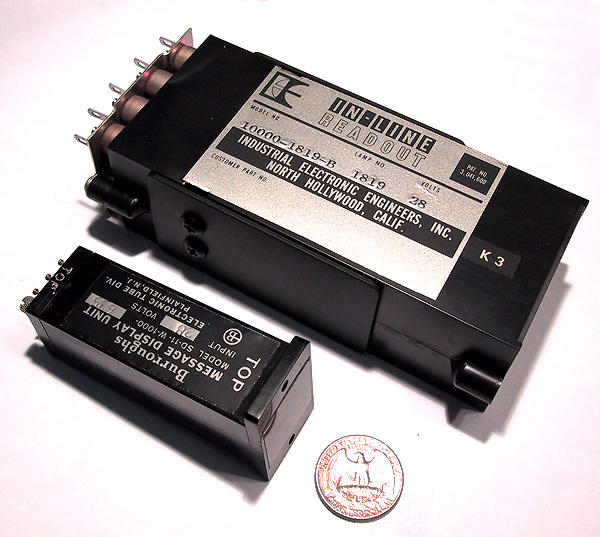
Since the SD-11 requires no lens stacks or slides, is much lighter than the average projection display.
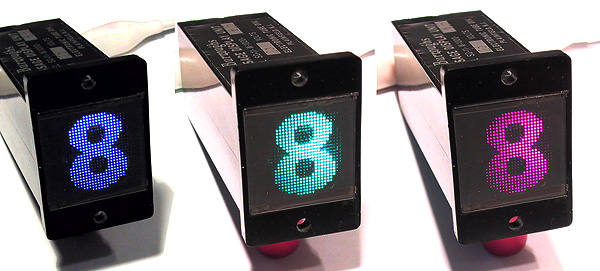
Due to the way the SD-11 works, its appearance is noticeably improved by replacing the bulbs with LEDs. Narrow beam LEDs produce clearer numbers because they produce less backscatter that can strike unwanted pixels.


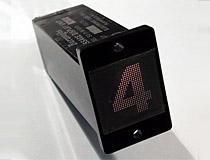













 Return to Incandescent Displays
Return to Incandescent Displays